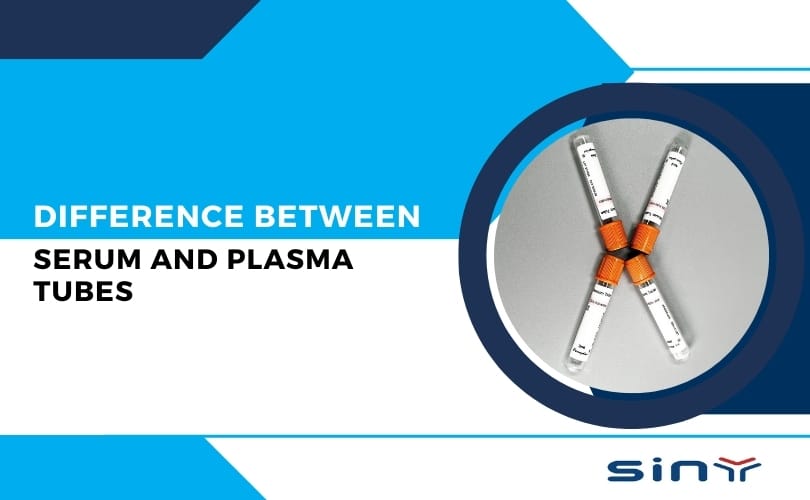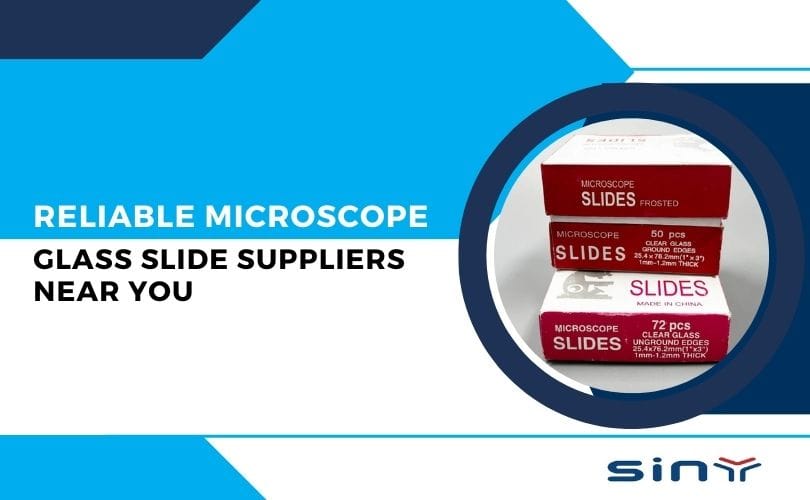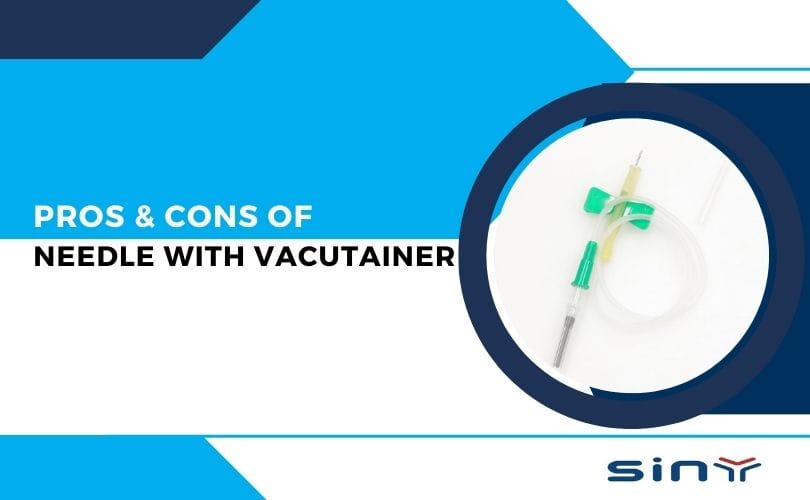A syringe is a medical device used to inject fluids into or withdraw fluids from the body. It typically consists of a hollow cylindrical barrel, a plunger that fits tightly within the barrel, and a needle attached to the end. Push the plunger down to inject fluid, or pull it up to draw fluid into the barrel. Syringes, commonly made from plastic, are designed for single use to prevent contamination and ensure patient safety.
Table of Contents
A syringe is a common medical device
It usually consists of a syringe, a piston, a needle, and a protective cover. The syringe is generally made of transparent plastic or glass with scales on it, which can accurately measure and control the injection dose. The piston can slide back and forth in the syringe, and the liquid or medicine can be pushed out by pushing the piston. The needle is the sharp part, which is used to pierce the skin and enter the human tissue for injection. The protective cover protects the needle from contamination when not in use.

The main uses of syringes include
Drug injection: accurately injecting various drugs, such as antibiotics, vaccines, and painkillers, into the human body to treat diseases, prevent diseases, or relieve symptoms.
Extracting body fluids: Blood, cerebrospinal fluid, and other body fluids can be extracted from the human body for testing or diagnosis.
Infusion of nutrient solution: Provide nutritional support for patients who cannot eat orally and inject the nutrient solution into the gastrointestinal tract or veins through a syringe.
What types of syringes are there?
There are mainly the following types of syringes:
Syringes capacity
Micro syringes: They are mainly used to inject small amounts of drugs, such as insulin, precisely, usually with a capacity of less than 1 ml.
Ordinary syringes: Common specifications include 2 ml, 5 ml, 10 ml, etc., suitable for general drug injection and infusion dosing.
Large-capacity syringes, such as 20 ml, 50 ml, or even larger capacity, can extract or inject a large amount of liquid, such as thoracentesis, abdominal puncture, etc.
Syringes use
Medical syringes: They primarily use syringes in the medical field for drug injections, infusion dosing, blood drawing, and other operations.
Veterinary syringes: syringes designed for animal medical treatment, usually more durable, and with different specifications to meet the needs of different animals.
Industrial syringes: In some industrial fields, such as chemicals and electronics, people use them to precisely inject liquids, glue, and other materials.
Syringes material
Glass syringes: Glass syringes have the advantages of high transparency and good chemical stability but are easy to break.
Plastic syringes: Plastic syringes are currently widely used, lightweight, not easy to break, and relatively low-cost.
How do you choose a syringe that suits you?
If you are self-injecting drugs, like insulin for diabetes, you can choose a special insulin syringe or insulin pen. Insulin syringes usually have a small capacity and precise scale, insulin pens are more convenient, and the dosage adjustment is more accurate.

When it comes to home emergency treatment of small wounds, such as applying disinfectant, the use of a small syringe of 1 ml or 2 ml is a powerful tool. It allows for precise control over the amount of medicine, empowering you in such situations and reducing the risk of waste.
For situations requiring intramuscular drug injections, the choice of an ordinary syringe of appropriate capacity is crucial. The common usage of 2 ml to 5 ml syringes in such scenarios should instill confidence in your selection.
Precautions for the use of syringes
Before use
Check the packaging: Carefully check whether the syringe’s packaging is complete and whether there is damage, leakage, expiration, etc. If there is a problem with the packaging, do not use it to avoid infection or affect the drug’s effect.
Check the specifications: Ensure the syringe’s capacity matches the amount of medicine you need to inject or extract to avoid inaccurate dosing or inconvenient operations due to an inappropriate capacity.
Check the cleanliness: Observe whether the syringe barrel, piston, and needle are clean and free of foreign matter, stains, etc. You cannot use them if they are unclean.
Prepare the drug
Choose the appropriate drug: Make sure that the drug used is compatible with the syringe and that no chemical reaction or physical change will occur.
For example, plastic syringes cannot extract some drugs to prevent adsorption or degradation.
Disinfect the bottle mouth: Disinfect the bottle mouth with an alcohol cotton ball before extracting the drug to prevent contamination
Correctly draw the drug: After inserting the needle into the medicine bottle, slowly pull the piston to extract the drug, and be careful to avoid bubbles. After the extraction, check whether the drug dosage in the syringe is accurate.
Injection process
Choose the injection site: Different methods (such as intramuscular injection, allowing the patient to choose the appropriate injection site for a subcutaneous injection, intravenous injection, etc. Intramuscular injection usually chooses the buttocks, upper arm deltoid muscle, and other parts. Subcutaneous injection can choose the abdomen, upper arm, outer side, and other parts, and intravenous infusion requires the selection of appropriate veins.
Disinfect the skin: Use alcohol cotton balls to disinfect the injection site. Wipe from the inside to the outside, and the area should be large enough to ensure the disinfection effect.
Exhaust: Before injection, gently push the piston to expel a small amount of air in the syringe to avoid injecting air into the body.
Insert the needle: Hold the syringe and quickly and steadily pierce the needle into the skin at an appropriate angle. Be decisive when inserting the needle to avoid hesitation that may cause the patient’s pain to increase or the needle to bend.
Inject the drug: Slowly push the piston to inject the drug into the body. Determine the injection speed based on the nature of the drug and the patient’s condition, and generally keep it a bit slow. Observe the patient’s reaction, and immediately stop the injection if any abnormalities occur.
Pull out the needle: Quickly pull out the needle after the injection. Press the injection site with a sterilized cotton ball to prevent bleeding and exudation.
After use
Proper disposal: Place the used syringe in a dedicated medical waste container. Do not dispose of it carelessly. Never reuse disposable safe syringes.
Clean your hands: Before and after using the syringe, wash your hands carefully and keep your hands clean and hygienic to reduce the risk of infection.
Conclusion
The syringe is a simple yet indispensable tool in the world of medicine. Its ability to deliver life-saving medications and perform critical diagnostic procedures makes it a cornerstone of healthcare. As technology advances, syringes will continue to evolve, becoming safer and more efficient. Understanding what a syringe is and its vital role in healthcare helps us appreciate the intricate details that go into even the most routine medical procedures.
FAQs
What are the different sizes of syringes available?
Syringes come in various sizes, typically ranging from 0.5 mL to 150 mL. The size used depends on the medical application.
What is the difference between a syringe and a needle?
The syringe holds and administers fluids. The needle, a sharp hollow tube attached to the syringe, injects or withdraws fluid from the body.
Can you use a syringe without a needle?
Yes, you can use syringes without needles for tasks like giving oral medication, irrigating wounds, or drawing fluids through a needle-free system.
Why is it important to use a sterile syringe?
Using a sterile syringe is crucial to preventing infections. Non-sterile syringes can introduce harmful bacteria or viruses into the body, leading to potentially severe health complications.



























































